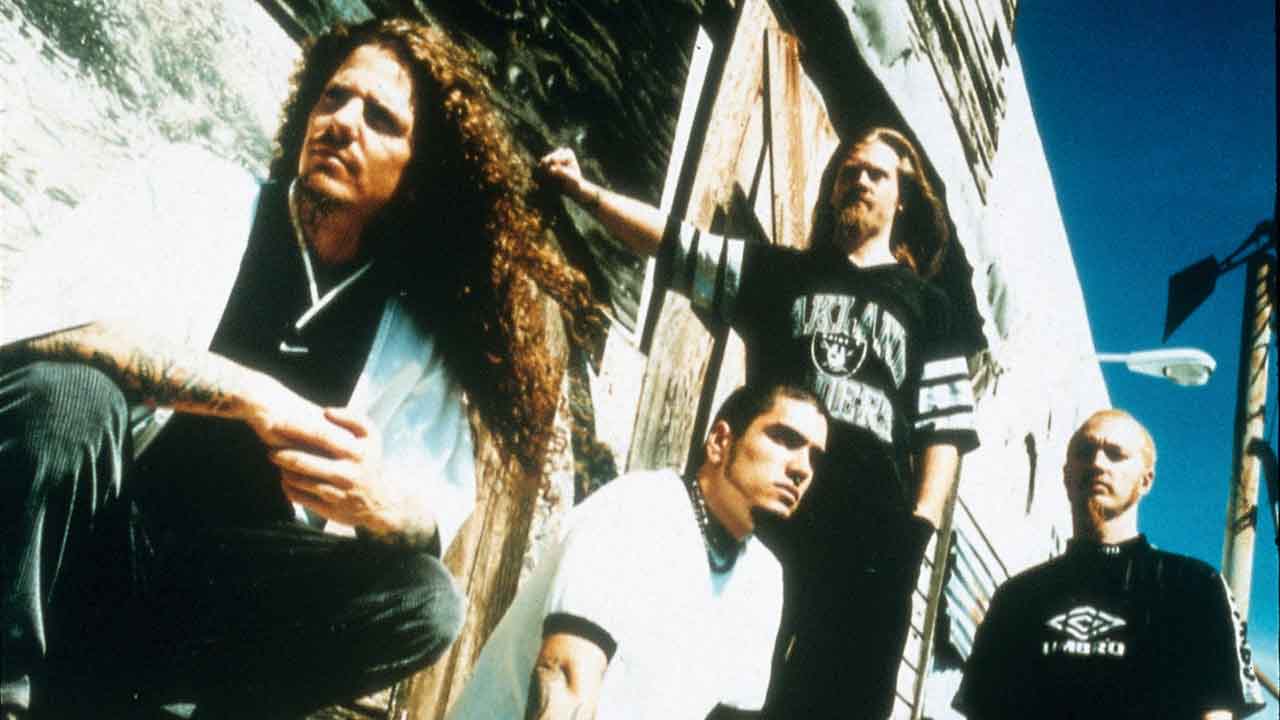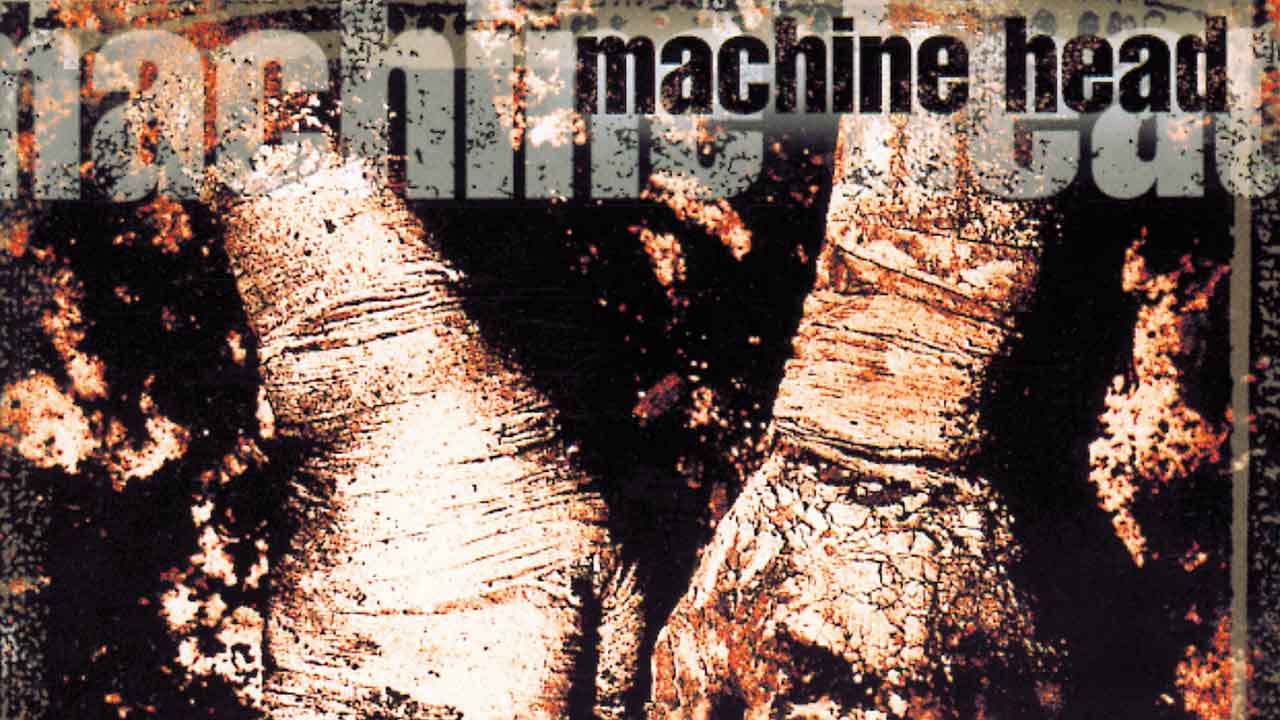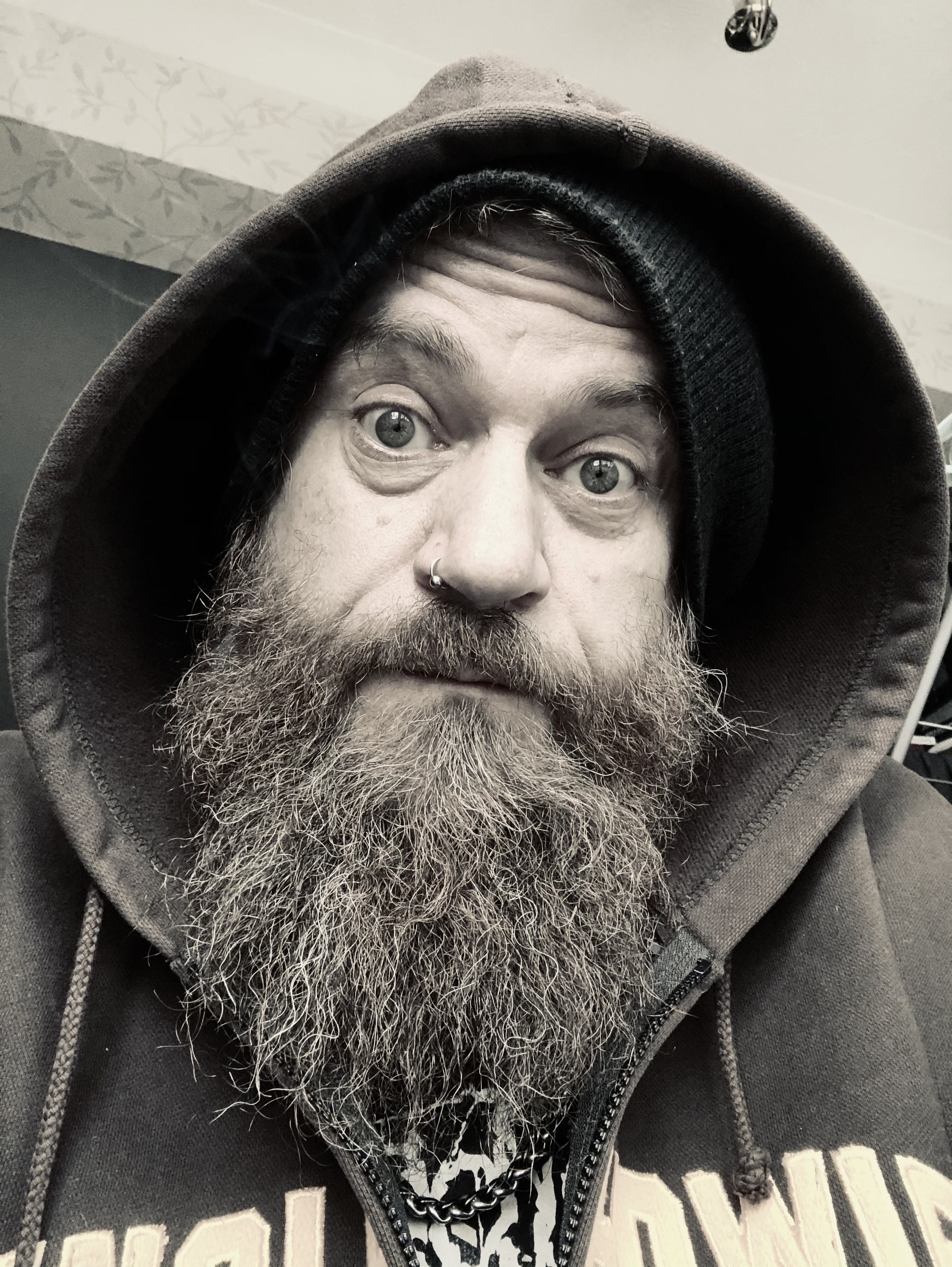While there may be some truth in the notion that metal was suffering from a lack of commercial muscle and media support during the mid-90s, it is equally hard to deny that Machine Head were instrumental in stoking the genre’s inner flame with their remarkable and groundbreaking Burn My Eyes debut in 1994. Along with the likes of Sepultura, Pantera and Fear Factory, the Oakland quartet were ably proving that heavy music could be both true to its roots and core values and focused on carving forward-looking furrows that pointed purposefully towards any number of brave new futures.
More so than even their closest peers, Machine Head had absorbed a broad palate of influences and combined them to create something of undeniable power and enduring value. Anyone who saw the band on any of their first few trips to Europe will be able to confirm that in terms of confidence, conviction and momentum, Robb Flynn and his comrades were pretty much untouchable, particularly for such a comparatively new band.
- Machine Head: From breakup to resurrection in less than a year
- The 10 best Machine Head songs
- Machine Head’s Through The Ashes Of Empires: inside their return to metallic glory
- The 100 best metal albums of the 90s
But grand legacies are cultivated via an ability to sustain greatness and command the attention of an ever-growing audience, rather than simple acts of mercurial bravado, and thus as Machine Head entered The Plant studios in Sausalito, California, some two years after the release of their first album, there was a significant amount of pressure on those eight shoulders as the reality and demands of creating a follow-up screeched into view.
Having just been fully refurbished by no less a musical force than Metallica (for the purposes of recording Load, their own follow-up to an album of some significant importance), The Plant was a big deal studio with a growing reputation and a fitting location for the recording of The More Things Change…, an album that simply had to be an outright monster.
With the wind in their sails following their initial triumphs, Machine Head were never going to be overly daunted by the task ahead, and thanks to an injection of fresh blood – Burn My Eyes drummer Chris Kontos had since been replaced by former Sacred Reich man Dave McClain, who had moved from Phoenix, Arizona to Oakland to link up with his new bandmates – a sense of optimism and renewed belief had long since drowned out any pre-recording nervousness. Throw in the presence of an aspiring young British engineer named Andy Sneap – formerly guitarist with cult British thrashers Sabbat and handpicked by Machine Head to assist them – and producer Colin Richardson in their quest to top the seemingly untoppable, and there could hardly have been any better circumstances in which to strike gold for the second time.
If there was a problem with the making of The More Things Change…, it was that Machine Head were conscious of the fact that they were expected to conjure up an album that at least matched, if not surpassed, the thrilling and destructive formula that had made its predecessor such a runaway success. There was overwhelming demand for Burn My Eyes 2 and the band’s fans could hardly be blamed for wondering whether or not Machine Head had many more of those mindblowing riffs and startling hooks up their collective sleeve. That is the price any band pays for producing a genre-defining debut album, after all.

In the end, of course, any doubts or concerns harboured by either dewy-eyed acolytes or sneering critics were swiftly dispatched with an almighty, nose-shattering left-hook. The More Things Change… never stood a chance of being universally hailed as an improvement on Burn My Eyes, but it delivered on every conceivable level and further strengthened the common perception that this compelling, mutant subgenre known as ‘groove metal’ was the only legitimate way forward for mainstream heaviness.
Setting out their stall with the crushing braggadocio of Ten Ton Hammer (“…like broken glass you’ll shatter/with bloody fists I’ll batter…”), Machine Head had plainly lost none of that all-important rage to overcome and nor had they allowed a desire to progress to dilute the purity and focus of their music and message. If anything, The More Things Change… is even more incensed and inflammable than Burn My Eyes, with just a touch of the mesmerising lyrical vulnerability that Robb Flynn would embrace with alacrity on later albums to momentarily distract from an otherwise relentless deluge of disdain. Just listen to the empowerment-through-contempt onslaught of Take My Scars, a song so heavy that Slayer seemingly borrowed its opening riff a few years later (check out Bitter Peace from Diabolus In Musica), and its anguished coda of “Why can’t you fuckin’ open up your eyes?” sung by an audibly livid Robb.
Similarly, the sheer intensity of anger evident in album highlight The Frontlines, wherein images of burning effigies, clenched teeth and “puke sold as salvation” mingled with some of the most strident and pulverising riffs ever committed to tape, made it abundantly clear that Machine Head’s vision of the world was gleefully horrifying and yet utterly sincere.
Once again, the chief musical weapons at the band’s command were those exhilarating, precise grooves, driven forward by perfectly entwined guitars and drums, Robb’s excoriating roar and a less easily defined but still unmistakable sense of urgency that stood in stark contrast to the more louche and lurching approach favoured by the burgeoning nu metal scene.
Yes, to some extent The More Things Change… was a worthy and deliberate attempt to reproduce Burn My Eyes, but hindsight suggests that the green shoots of genuine progress were sprouting through cracks in the creative concrete too. Songs like the sinister Spine, the cruelly languorous Violate and the murderous drama of Blood Of The Zodiac exhibited a newfound knack for damaging dynamics and unsettling atmospheres that would begin to dominate proceedings on 1999’s The Burning Red, taking Machine Head into more adventurous and yet curiously polarising new territory. Similarly, the tempo shifts, bursts of vicious speed and abstruse rhythmic diversions of Struck A Nerve, Bay Of Pigs and Blistering also belied the idea that this was a mere retread of tried and tested ideas.
Released in March, 1997, The More Things Change… was received with great enthusiasm by press and riff-hungry public alike. It ensured that Machine Head’s bid to further establish themselves in the US gained a new head of steam – the band were respected participants on the inaugural Ozzfest tour alongside Pantera and Marilyn Manson in May ’97 – while their ongoing march to glory on the other side of the Atlantic continued unabated.
Whether grinding inexorably on as a headlining act with such notable acts as Napalm Death, Entombed and Coal Chamber providing able support at various points, or making a debut appearance at the prestigious Dynamo festival in the Netherlands, Machine Head had firmly established themselves as one of Europe’s favourite metal bands, and The More Things Change… did plenty to escalate that campaign.
Of course, guitarist Logan Mader would soon depart due to some regrettable personal habits that threatened to throw a spanner in the works of this otherwise efficient touring machine, but thanks to a combination of killer songs, unerring commitment and perfect timing, Machine Head were already well equipped to weather a storm or three.

